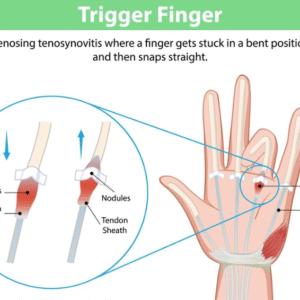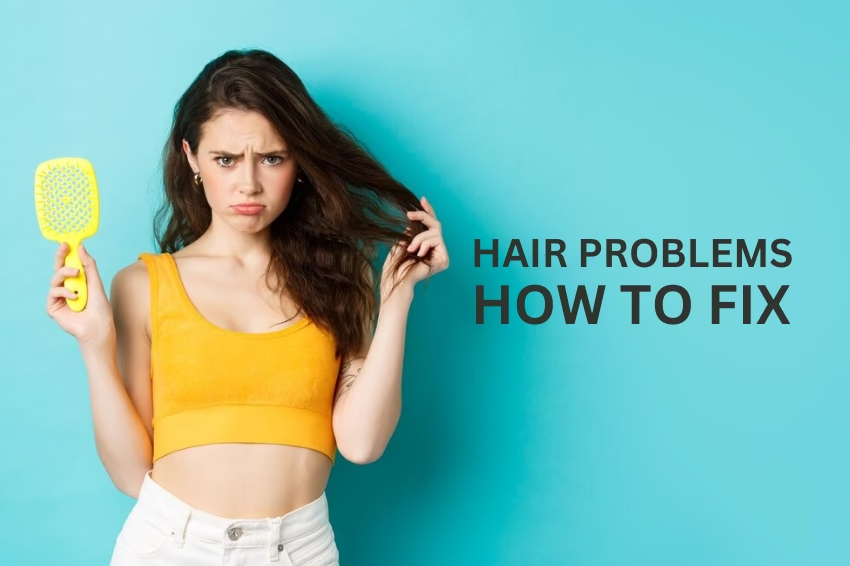Invisalign vs. braces: both are orthodontic treatments designed to help straighten teeth and correct bite issues. They have their own advantages and disadvantages, and the choice between them depends on individual preferences and specific dental needs.
The journey towards a straighter smile involves making critical decisions, and one of the most important choices you’ll face is selecting the right teeth-straightening method. With options like Invisalign vs. braces, it can be challenging to determine which route is best for you.
Let’s delve into an in-depth comparison between Invisalign vs. braces, exploring their pros and cons. We’ll also look at factors like effectiveness, cost, and lifestyle implications, helping you make an informed decision.
What is Invisalign Treatment?
Invisalign treatment involves using a series of clear, removable aligners custom-designed to fit your teeth snugly. These aligners gradually shift your teeth into their proper positions over time. The aligners are virtually invisible, providing a more aesthetic alternative to braces.
The Invisalign process starts with a 3D scan of your teeth. Your orthodontist will then develop a treatment plan that uses a series of trays to gradually move your teeth into place. Each set of trays is worn for one to two weeks before moving on to the next set.
The overall treatment durations for Invisalign can vary depending on the complexity of your dental issues. However, they are often comparable to the time frames required for braces, which can range from several months to a couple of years.
Advantages of Invisalign Treatment
- Aesthetically Pleasing
One of the most significant advantages of Invisalign is its aesthetic appeal. The clear aligners are virtually invisible, making them particularly appealing to adults and teenagers who are concerned about the cosmetic aspect of teeth straightening. This can be a significant confidence booster, especially for individuals who have to engage in a lot of social or professional interactions.
- Comfort
Invisalign aligners are crafted from a soft, flexible plastic material that conforms to the shape of your teeth. This feature provides a more comfortable experience compared to braces, which involve wires and metal brackets that can sometimes cause irritation.
- Convenience
The removable nature of Invisalign aligners offers unparalleled convenience. You can take them off while eating, brushing your teeth, or for special occasions. This not only makes it easier to maintain good oral hygiene but also allows you to continue enjoying the foods you love without any restrictions.
- Time-Saving
Invisalign also offers the benefit of saving you time. The need for frequent orthodontic visits for adjustments, as is the case with braces, is largely eliminated. Many orthodontists now offer virtual consultations and follow-ups, making it even more convenient for individuals with busy schedules.
Disadvantages of Invisalign Treatment
- Requires Discipline
While the removable feature of Invisalign offers convenience, it also demands a high level of discipline. For the treatment to be effective, you must commit to wearing the aligners for at least 22 hours per day. Failure to do so can delay the treatment process.
- Limited Scope
Invisalign has limitations when it comes to treating complex dental issues, such as severe overcrowding, misalignment, or certain kinds of bite problems. While the technology has advanced significantly, braces still offer more comprehensive solutions for these cases.
- Costly Investment
Another downside to Invisalign is the cost. The treatment generally requires a higher investment compared to braces. If budget constraints are a major concern for you, this could be a critical determining factor in your decision.
What are Braces?
Braces have been around for decades and have proven to be effective in treating a variety of dental alignment issues. They typically consist of metal brackets glued to each tooth and connected by wires. There are also options for ceramic or clear brackets for those who prefer a less noticeable appearance.
Getting braces involves an initial consultation with an orthodontist, who will then take molds and X-rays of your teeth. The brackets are then glued to your teeth and connected with wires. Periodic adjustments are made to tighten the wires and guide your teeth into the desired position.
The duration of treatment can vary widely, depending on the complexity of your case, but it usually ranges from 18 to 24 months. However, more complicated cases may require an even longer period to achieve optimal results.
Advantages of Braces
- Versatility
Braces are highly versatile and effective in treating a wide range of dental issues, from mild cases of misalignment to more complex problems like extreme overbites, underbites, or crossbites. They allow the orthodontist more control over the teeth, making minute adjustments possible.
- Lower Maintenance
Once installed, braces require less day-to-day maintenance. You don’t need to worry about taking them off and putting them back on multiple times a day, as you do with Invisalign. This feature can be a boon for people, particularly children or busy adults, who might find the constant need for removal and reinsertion burdensome.
- Predictability
Braces often offer more predictability for complex cases. Since they give the orthodontist the ability to make minute adjustments, they often yield more precise results for complicated issues that need detailed attention.
- Long-Lasting Results
Because braces generally take longer and can be adjusted more finely, the results tend to be long-lasting. Patients often need less post-treatment maintenance like wearing retainers, which can be a significant advantage.
Disadvantages of Braces
- Aesthetic Concerns
The most evident disadvantage of braces is their visibility. Even with the ceramic or clear bracket options, they are still more noticeable than Invisalign aligners, which can be a concern for people who are conscious of their appearance.
- Discomfort
Braces can cause some degree of discomfort or irritation to the lips, cheeks, and tongue, particularly in the initial stages or after adjustments. This can be a downside for those who prioritize comfort.
- Dietary Restrictions
With braces, certain foods that are sticky, hard, or crunchy must be avoided to prevent damage to the brackets and wires. This limitation can be a significant inconvenience for some individuals, especially those who enjoy a wide variety of foods.
Invisalign vs. Braces: Comparative Analysis
To better understand the pros and cons of each treatment option, it’s useful to look at them side by side.
Effectiveness
While braces have been the go-to option for complex dental issues for years, Invisalign has also made substantial advancements in treating a range of dental alignment cases. However, for severe misalignments and complicated bite issues, braces still hold the edge in terms of effectiveness.
Aesthetics
When it comes to aesthetics, Invisalign is undoubtedly the winner. The almost invisible nature of the aligners makes it an ideal choice for those who want to improve their smiles without drawing attention to the treatment.
Comfort and Lifestyle
Invisalign aligners are generally more comfortable to wear than braces. They are custom-fitted and made of a soft, flexible material that is less likely to irritate the mouth’s soft tissues.
Convenience
The removable nature of Invisalign aligners allows for greater freedom when it comes to eating and oral hygiene. This feature puts Invisalign ahead in the convenience factor.
Costs
Braces are generally less expensive than Invisalign treatment. Insurance coverage also tends to be more straightforward for braces compared to Invisalign, which is sometimes categorized as a cosmetic procedure.
Maintenance
Braces require more frequent visits for adjustments, while Invisalign trays can often be provided in multiple sets for self-treatment over several weeks.
Dietary Considerations
Braces come with dietary restrictions, while with Invisalign, you’re free to eat whatever you want. Just remove the trays, and you’re good to go. This makes Invisalign more attractive for foodies or those who don’t want to change their eating habits.
Treatment Time
Braces usually take longer to achieve the desired results, especially for complex issues. On the other hand, Invisalign tends to be quicker for mild to moderate problems but may not be effective for severe cases.
Speech and Social Factors
Braces may cause temporary speech impediments and can be visible, affecting your confidence. Invisalign, being nearly invisible and not affecting speech, wins in this category.
Factors to Consider When Making a Choice
Your decision between Invisalign vs. braces should be influenced by several factors:
- Age: Braces are more common for younger patients, while Invisalign is often preferred by adults.
- Dental Condition: The severity and type of misalignment can dictate the most effective treatment.
- Lifestyle: Consider your comfort and appearance preferences.
- Budget: Be sure to weigh the overall costs, including hidden fees and maintenance.
- Professional Requirements: If your job requires a lot of public speaking or client interaction, the aesthetic benefits of Invisalign might be more important to you. On the other hand, if you’re in a position where appearance is less crucial, braces could suffice.
Conclusion
Making the right choice between Invisalign and braces is more than just about cost and aesthetics; it also involves thinking about your lifestyle, comfort, and long-term satisfaction. Both have their merits and drawbacks, but the choice is deeply personal and should be based on a thorough evaluation of various factors, including your dental condition, age, lifestyle, and budget.
If aesthetics and convenience are your top priorities, and you are willing to invest in a higher-cost treatment, Invisalign may be the better choice for you. However, if you have more complex dental issues or are on a tight budget, braces may be more suited to your needs.
Whatever you choose, the journey to a more beautiful smile is well worth it. The benefits of straighter teeth go beyond aesthetics, improving oral health and potentially reducing issues like gum disease and jaw pain. And if you’re in the San Antonio area, Evans Family Dental offers personalized consultations to guide you through this important decision. So take the next step in your smile journey and consult with professionals to make the most informed decision possible.






